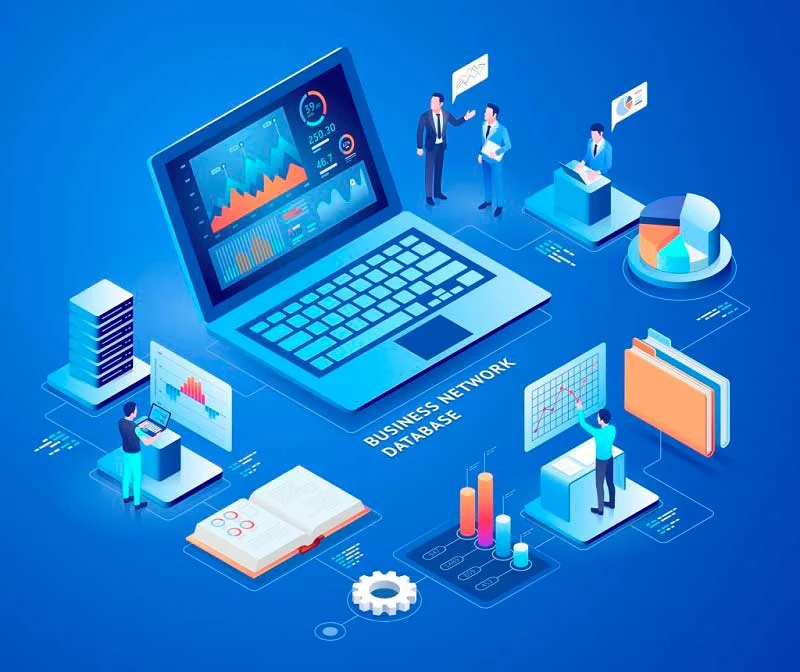Using a product-oriented working mannequin integrates digital initiatives with business objectives, boosting collaboration and responsiveness. This change improves workflow efficiency and adaptation to dynamic cloud environments. Introducing roles such as web site reliability engineers and product managers may help additional tackle the unique wants, guaranteeing a easy transition and an organizational tradition of constant development SOA vs Microservices. Monitoring and ObservabilityImplementing efficient monitoring and observability is essential for sustaining the health and efficiency of cloud-native applications. Developers ought to leverage tools and strategies that present insights into application performance, resource usage, and potential issues. It can help handle the elevated complexity of communication between companies by providing options such as load balancing, service discovery, and visitors administration.
Prime 8 Advantages Of Cloud-native Architecture
Organizations flip to cloud-native architecture for increased scalability, flexibility, and resilience. Plenty of coding groups write blogs and manuals about how they handle cloud-native architecture. Reading by way of them may give you an concept of what others do to tackle the identical challenges you face. Cloud-enabled methods can work in a standard setting, and in concept, they will function in the cloud. Soon, you enter what specialists name a “concern cycle.” You can’t change one small factor with out probably breaking every little thing else.
Cloud Native Compared To Cloud Enabled
- We explore the benefits of this modular approach, together with improved scalability, fault isolation, and quicker growth cycles.
- Cloud-native applications have been designed with cloud computing on the forefront, allowing businesses to scale and change their choices with larger ease and velocity than ever.
- Enterprises can minimize bills by using open-source tools, adopting serverless architectures, and implementing pay-per-use models for computing and community assets.
Every company should weigh these execs and cons carefully and make a decision that is right for the business, for shoppers, and for stakeholders. Hold planning discussions early and be positive that the whole team understands the method before the construct begins. Plenty of corporations develop systems for typical environments, and when needs change, they push these techniques into the cloud. seventy eight p.c of firms planning to develop apps within the subsequent 12 months are designing no less than a kind of apps to be cloud-native.

Cloud-native Structure: A Guide, Definitions, Types & Extra

Fast and even real-time response could even hold excessive expectations in check as you handle each one by way of this type of cloud infrastructure. One of the biggest challenges an organization faces is keeping up with altering customer expectations. Many customers believe devops teams ought to immediately reply to their shifting adjustments or demands. Many in your buyer base anticipate you to know what they need before they are saying something about it.
Sooner Development And Deployment
Agile DevOps practices using cloud platforms needn’t be subject to the management overhead of traditional monolithic improvement. Organizations can shift growth, testing, and delivery as wanted between teams and geographies. The cloud-native mannequin helps you meet crucial business wants by making improvement of microservices architecture simpler. This architecture lets smaller devops teams in your own firm, or in partnership with different firms, give attention to completely different parts.
Migrating legacy processes to the cloud solely transfers their location without necessarily aligning them with the dynamic and scalable character of cloud-native methods. Prioritize reengineering over mere migration and engage in extensive workflow redesign. ConclusionEmbracing cloud-native structure can provide organizations with numerous advantages, together with scalability, resilience, and agility. However, it additionally introduces new challenges, such as elevated complexity and safety considerations.
However, these capabilities can not compensate for the duplication of instances for different purposes, such as having a number of versions, or as a byproduct of monolith deployments. The unique mainframe computers used punch playing cards and most of the computation occurred inside batch processes. There was no online processing and latency was at 100% as nothing was processed in real time. Discover emerging tendencies, insights, and real-world greatest practices in software improvement & tech management. “Observability offers solutions with metrics, logs and traces throughout the IT stack to provide the full image of your IT health. IT leaders also can migrate complex web sites from monolithic platform hosts and separate payment processing and ordering methods.
To achieve this, they use fashionable tools and methods that inherently assist software growth on cloud infrastructure. These cloud-native technologies assist fast and frequent modifications to purposes with out impacting service delivery, offering adopters with an innovative, competitive benefit. The serverless model is a important part of cloud-native software development and deployment. It removes the necessity for builders to manually scale and configure sources by routinely adding or eradicating sources, as required.
Cloud-native systems use APIs to bring the loosely coupled microservices together. API tells you what data the microservice wants and what results it can provide you, as an alternative of specifying the steps to achieve the finish result. By adopting the cloud-native method, corporations don’t need to put cash into the procurement and upkeep of expensive physical infrastructure. The price financial savings of building cloud-native solutions may additionally profit your shoppers.
By containerizing the microservices, cloud-native functions run independently of the underlying operating system and hardware. This means that software developers can deploy cloud-native purposes on premises, on cloud infrastructure, or on hybrid clouds. Developers use containers for packaging the microservices with their respective dependencies, such as the useful resource recordsdata, libraries, and scripts that the primary utility requires to run. Microservices can facilitate management and inner communications by building a dedicated infrastructure layer, referred to as a service mesh, that handles these communications.
When your business can deploy and update apps more quickly in response to evolving buyer calls for, you provide a superior customer-centric expertise that can hold your shoppers happy and dependable. Traditional on-premise work fashions have businesses spending large portions of their IT finances on infrastructure – usually without even absolutely utilizing its capacity. Cloud-native architecture only requires you to pay for capacity you employ, and (as talked about above, reduces time spent on maintenance). With zero-trust structure, you might be all the time working under the assumption that a breach can happen at any time. Each request must be verified every time, no matter origin, and users are granted the lowest level of needed permissions (the least-privilege principle). Critical systems and information must also be segmented from the the rest of your IT setting.

Using serverless platforms does notrequire configuring on-premises networking, planning for storage, andprovisioning cloud instances. According to Capgemini, the speed enabled by cloudsolutions is the most important benefit of cloud-native tools. To prime it off, superior CX comes intoplay, allowing companies to create a aggressive edge. Containers work equally to digital machines (VMs), though containers are rather more flexible. While it’s only attainable to install VMs with the support of a full operating system, containers can help functions by packaging software program.
Mainframes are based on a centralized knowledge storage and computing mannequin, with basic client terminals used for knowledge entry and knowledge show on primitive screens. “Adopting container know-how dramatically improves the application lifecycle, from inception to manufacturing deployment,” based on a post by Palo Alto Networks. Expecting a particular person or consumer’s requests to come back to the same part on their subsequent invocation, perhaps due to particular information caching. Suddenly, the orchestration platform cant do simple load-balanced routing, relocation, or scaling of the replicas.
Legacy techniques seamlessly integrate with modern cloud infrastructure utilizing cloud-native applied sciences. This article is sponsored by UST, which provides cloud service solutions trusted by main brands in healthcare, finance, retail, and more. The breadth and depth of UST’s solutions result in quick impression and guarantee a future-ready cloud infrastructure with services that embrace design, implementation, and governance. UST consultants reimagine cloud strategy, governance models, cybersecurity, and software improvement to take full benefit of the cloud. ResilienceCloud-native applications are designed to be resilient, that means they can rapidly recuperate from failures and continue to function smoothly. This resilience is achieved via practices like containerization, which isolates purposes from their underlying infrastructure, and microservices, which allows independent service deployment.
The varied internet hosting fashions, from mainframes to the recent cloud-native structure, impact the way we develop, deploy, and keep enterprise apps. Each time the business discovered a brand new internet hosting mannequin, teams faced challenges in harvesting the complete advantages of the structure. This led to unintended consequences like architecture deviations and anti-patterns, which brought on important technical debt. Over time, new design patterns evolved to address the stabilization gaps opened by the brand new hosting mannequin. Perhaps one of the biggest benefits of cloud-native applications is that safety is commonly built into the infrastructure, offering stronger, scalable protection as functions evolve. With safety controls embedded at each layer — containers, microservices and APIs — any new code inherits the most recent safety policies.
Transform Your Business With AI Software Development Solutions https://www.globalcloudteam.com/ — be successful, be the first!
